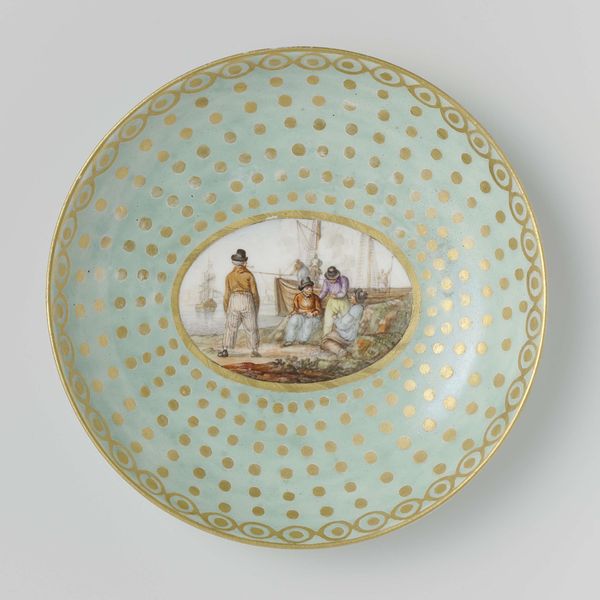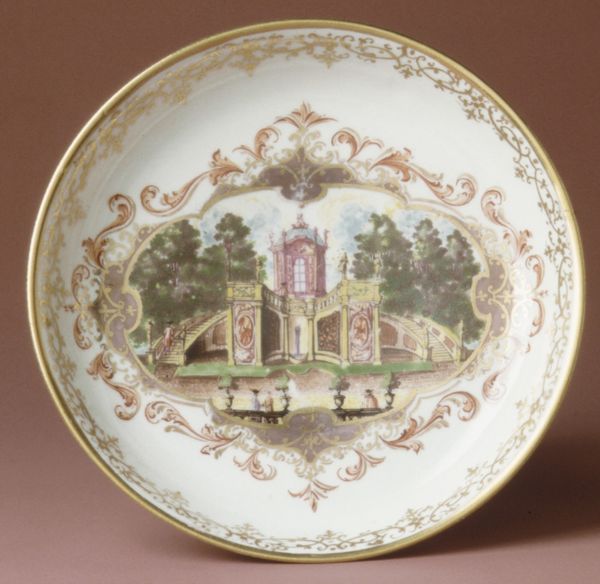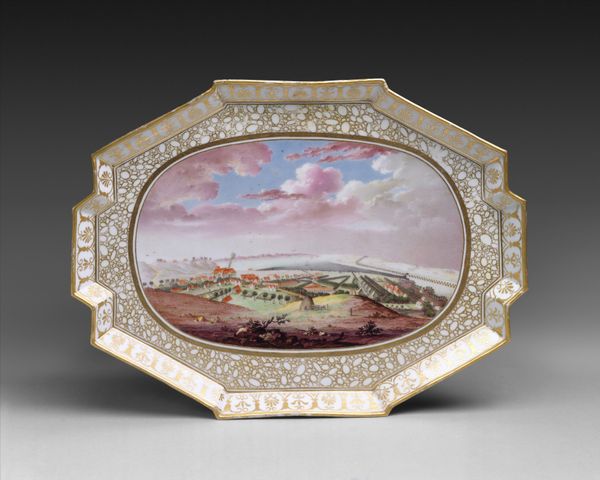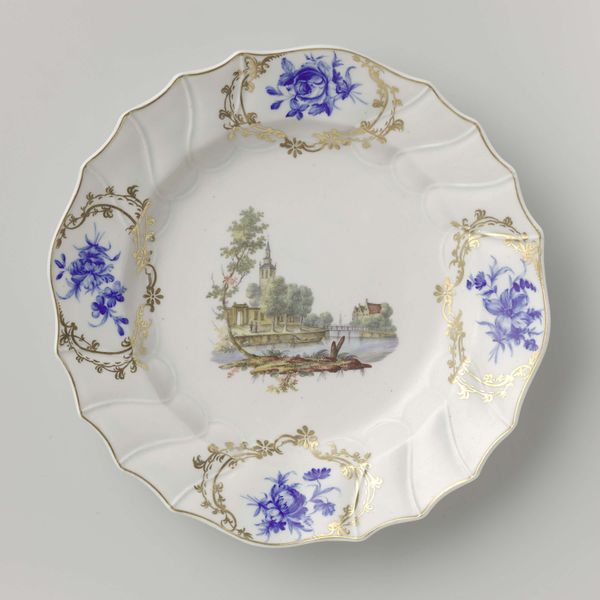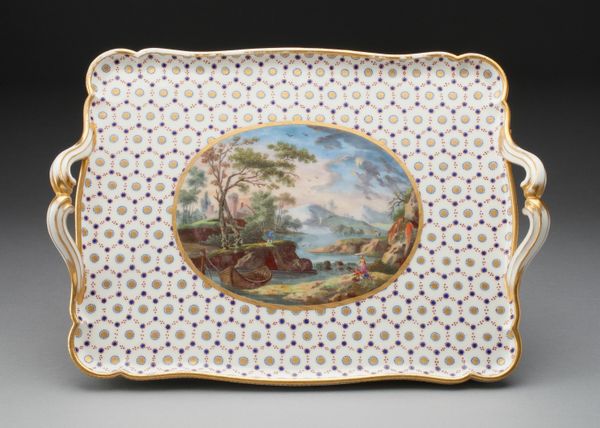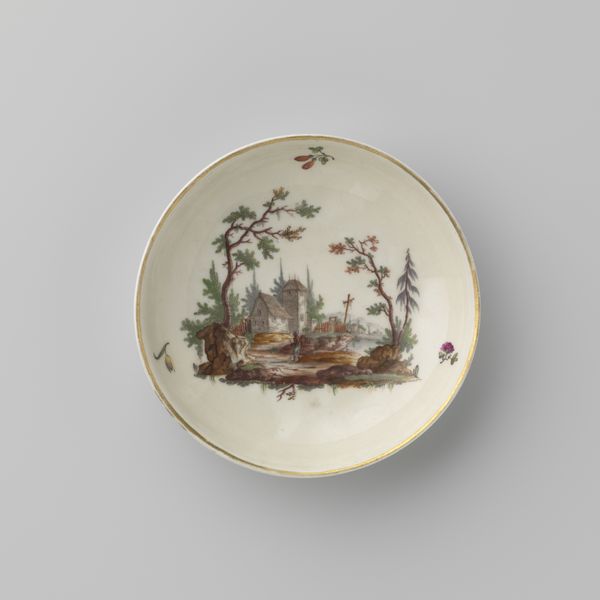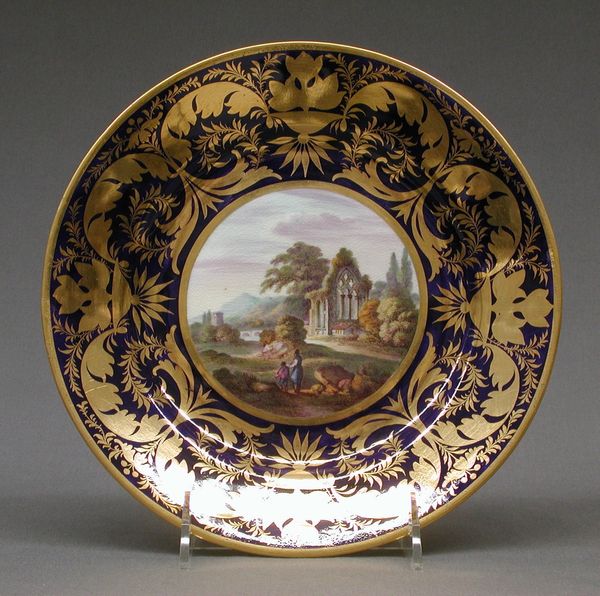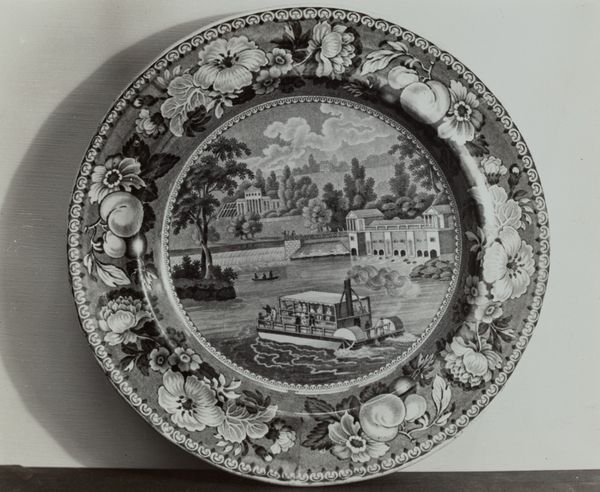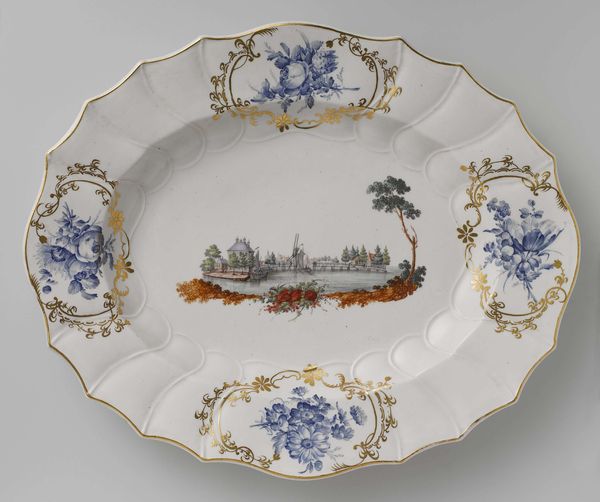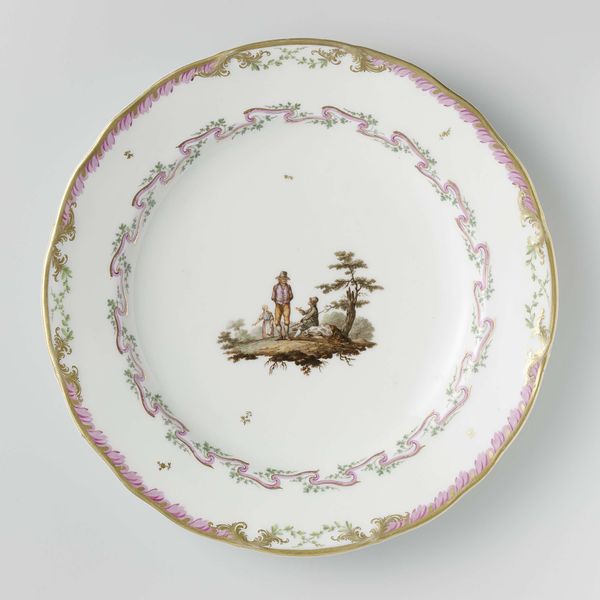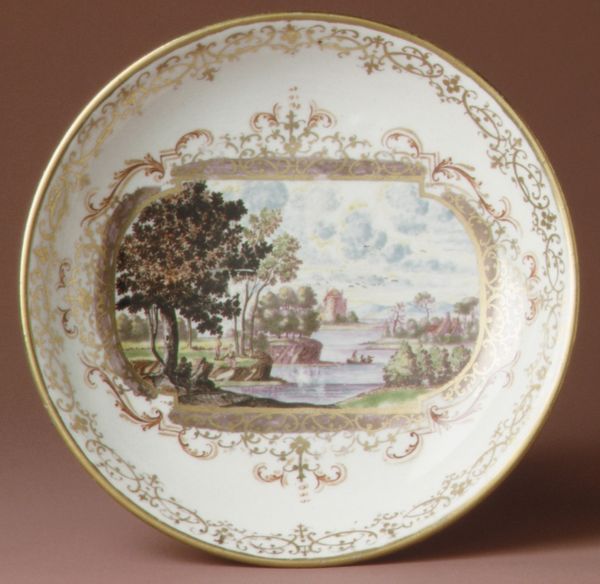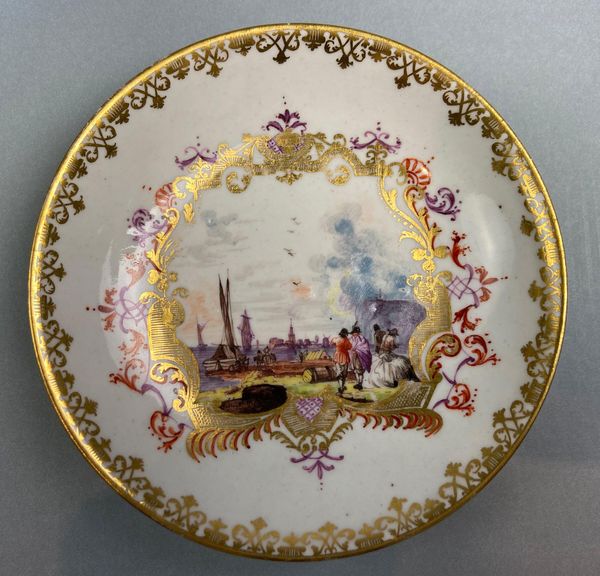
Dimensions: height 2.2 cm, length 34 cm, width 29.2 cm
Copyright: Rijks Museum: Open Domain
Editor: This is a Loosdrecht tea service for two, a *tête-à-tête*, crafted around 1782 to 1784, employing ceramic and porcelain, delicately painted with watercolor. It strikes me as such an intimate, luxurious object. What narratives do you think such an object was meant to perform? Curator: It’s a beautiful piece that really embodies the Rococo era. What initially grabs my attention is thinking about what "tea" itself represented, socially. This wasn’t just about drinking a beverage; it was deeply intertwined with trade, colonialism, and ultimately, class. Can we consider, perhaps, the relationship between the delicate artistry and the rather brutal realities that made its creation possible? Editor: That's a really powerful perspective! I hadn't considered the darker side of such a seemingly delicate object. So, the act of using this service, then, was in itself…complicated? Curator: Precisely. Think about who would have been using this. Wealthy Europeans, likely benefiting directly from colonial exploitation. This tête-à-tête, this intimate sharing of tea, becomes a stage for performing social status, but it also hints at a deliberate ignorance of the source of that wealth. What story is being obscured by this beautiful image of commerce in the central reserve? Editor: That makes me see the history-painting scene in a completely new light. What looked like simple commerce now feels like a screen, hiding something less palatable. So the function of these pieces would have been to perform rituals that disguised inequality? Curator: Exactly. These objects are not passive. They are active participants in the social and political theater of the late 18th century. What happens when we place these objects on a global stage? Editor: Wow. I will never look at a fancy tea set the same way again! Thanks for showing me a new way to contextualize historical art. Curator: My pleasure. It is important to reflect on the ethical implications present in art. It helps to question perspectives.
Comments
rijksmuseum about 2 years ago
⋮
Manufactuur Oud-Loosdrecht sugar bowl: Manufactuur Oud-Loosdrecht or Porceleinfabriek aan den Amstel Loosdrecht and Ouder-Amstel, c. 1782–1784 hard-paste porcelain
Join the conversation
Join millions of artists and users on Artera today and experience the ultimate creative platform.
